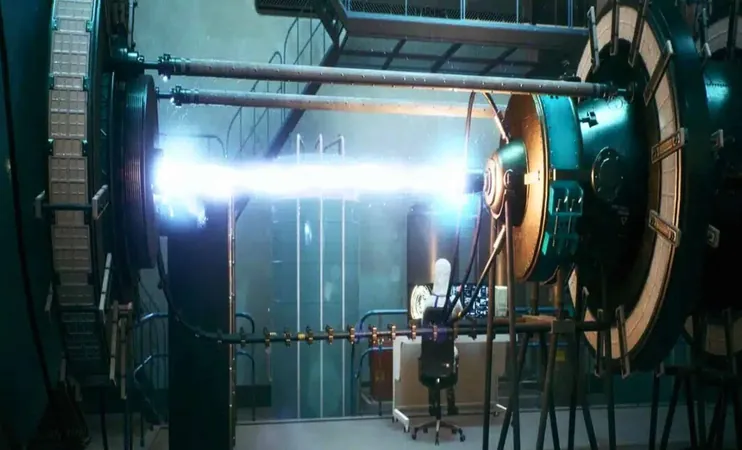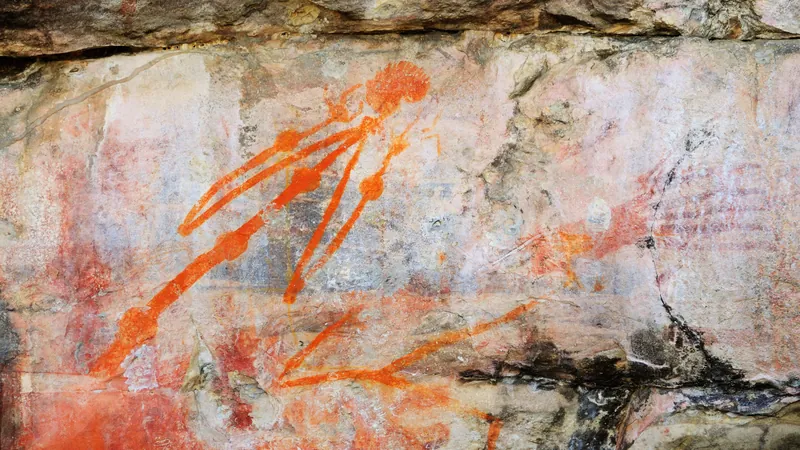
Thales Takes Ambitious Leap to Create an 'Artificial Sun' Using Lasers – A Revolutionary Journey Begins!
2025-05-27
Author: Chun
Thales Unveils Groundbreaking Fusion Project in France
In a stunning announcement just outside Bordeaux, Thales, one of France's leading technology giants, has launched an ambitious initiative aimed at recreating the sun's energy here on Earth. Under the banner of a newly formed subsidiary called GenF, this project promises a future powered by the revolutionary potential of nuclear fusion.
A Marvel of Science: Laser-Driven Fusion
On May 15, a gathering of top executives, researchers, and local officials celebrated the inception of this extraordinary venture, which seeks to develop a laser-based nuclear fusion reactor. Utilizing high-powered lasers for inertial confinement fusion, the project has received an enthusiastic boost of €18.5 million from the French government, marking the start of a decade-long roadmap aimed at energy innovation.
The Fusion Process: More Than Just Energy
What sets this project apart is its cutting-edge technology known as laser-driven inertial confinement fusion. By unleashing synchronized laser pulses on a tiny target to induce extreme conditions, the method allows atomic nuclei to fuse and release tremendous amounts of energy. This process not only produces no long-lasting radioactive waste but also significantly reduces the risk of catastrophic meltdowns associated with traditional fission.
Harnessing Existing Infrastructure: The Laser Mégajoule
Thales will utilize the advanced capabilities of the Laser Mégajoule (LMJ), a state-of-the-art facility already used for military and research endeavors. With the collaboration of the Commissariat à l’énergie atomique et aux énergies alternatives (CEA), LMJ is set to play a critical role in simulating and testing the conditions required for fusion. Thales has previously contributed vital technologies to LMJ, establishing a solid foundation for this ambitious project.
Collaborative Efforts: Building an Energy Future
This initiative is not a solo flight. GenF has forged alliances with elite national research institutions like the CEA, École Polytechnique, and the Centre National de la Recherche Scientifique (CNRS). Additionally, support from the Nouvelle-Aquitaine regional government highlights France's commitment to becoming a frontrunner in clean energy technology.
A Unique Approach: Thales’ Expertise in High-Energy Lasers
While many global fusion projects explore magnetic confinement techniques like those in the ITER reactor, Thales is mining over 40 years of experience in high-energy lasers to carve its own path. Known for its contributions in electronic tube technologies and international initiatives, this expertise lays the groundwork for GenF's ambitious plans.
A Clear Path to Innovation: Phased Development of a Prototype
GenF's ambitious development journey unfolds in three strategic phases. By 2027, the team aims to complete crucial early experiments at LMJ. Following this, an extensive eight-year period focusing on technology refinement will run from 2027 to 2035. The third and final phase targets the creation of a fully operational prototype in the mid-2030s. Although specific performance benchmarks are yet to be revealed, the project represents a significant milestone in the quest for viable fusion energy using inertial confinement.
The Team Behind the Science: Experts at Work
Currently, GenF boasts a skilled team of around ten core scientists, engineers, and industrial specialists, supported by an additional 40 collaborators. As momentum builds and milestones are achieved, this pioneering project is expected to expand, ushering in a new era of energy production rooted in clean and renewable technology.





 Brasil (PT)
Brasil (PT)
 Canada (EN)
Canada (EN)
 Chile (ES)
Chile (ES)
 Česko (CS)
Česko (CS)
 대한민국 (KO)
대한민국 (KO)
 España (ES)
España (ES)
 France (FR)
France (FR)
 Hong Kong (EN)
Hong Kong (EN)
 Italia (IT)
Italia (IT)
 日本 (JA)
日本 (JA)
 Magyarország (HU)
Magyarország (HU)
 Norge (NO)
Norge (NO)
 Polska (PL)
Polska (PL)
 Schweiz (DE)
Schweiz (DE)
 Singapore (EN)
Singapore (EN)
 Sverige (SV)
Sverige (SV)
 Suomi (FI)
Suomi (FI)
 Türkiye (TR)
Türkiye (TR)
 الإمارات العربية المتحدة (AR)
الإمارات العربية المتحدة (AR)